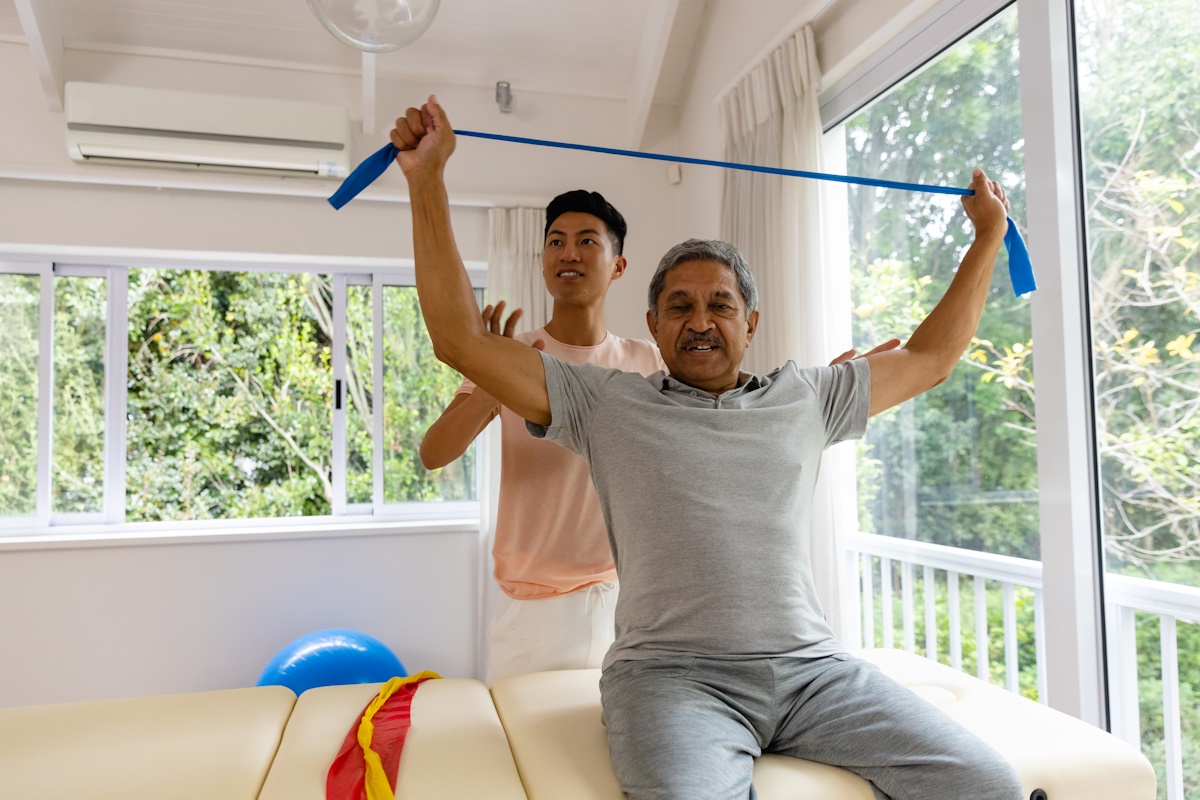Why physical therapy may be your answer to treating urinary incontinence
Are you tired of being held back by urinary incontinence? Don’t worry, you’re not alone. Physical therapy is a viable solution that can help you manage this common condition. With physical therapy, you can regain control of your life and focus on what matters. Say goodbye to embarrassing leaks and explore how physical therapy can help prevent urinary incontinence from affecting your daily routine. Take action today and start living the life you deserve.
It is not uncommon for men to experience incontinence, which can cause significant stress. Some men would rather deal with erectile dysfunction than incontinence.
For some men, urinary incontinence can be troublesome enough to take a toll on their mental health, social and sex life, sleep, and independence.
Types and Causes of Urinary Incontinence
There are several types of incontinence:
Stress incontinence
If you’ve ever had a small amount of urine leak during exercise or when coughing, sneezing, or laughing, you might be experiencing stress incontinence. It happens when your bladder is under pressure during these activities, causing urine to leak out. It’s not uncommon; fortunately, there are ways to manage it and return to your active lifestyle.
Urge incontinence
Sometimes, people have a condition called overactive bladder or OAB. When you have OAB, you feel like you need to pee all of a sudden, and it can be challenging to hold it in.
Mixed incontinence
When someone has both stress and urge incontinence happening at the same time, this is known as mixed incontinence.
Causes of urinary incontinence include:
- Urinary tract or vaginal infections
- Medication side effects
- Constipation
- Weakness in specific muscles
- Diseases and disorders relating to the nerve and muscles
- Certain types of surgery
- Weight gain
What To Do if You Experience Urinary Incontinence
If you are experiencing urinary incontinence, the first step is to talk with your doctor. After a thorough exam and assessment, they may recommend medication, behavioral therapy, or physical therapy. Surgery will be an option only after other therapy options have failed.
Physical Therapy to Treat Urinary Incontinence
Based on your assessment, your physical therapist may suggest Kegel exercises or ask you to track your bladder habits (including what you eat and drink) to determine a connection to your incontinence.
Kegel Exercises
Kegel exercises are movements designed to strengthen and retrain pelvic floor muscles. Men may need to realize if they are doing the exercises improperly. Repeating an exercise too many times may make your muscles tired. However, exercising too few times may not help your muscles grow stronger.
To help determine if the correct muscles are contracting and relaxing during Kegel exercises, your therapist may use biofeedback—a sensor that connects to a computer. This tool helps with coaching and raises awareness of when you contract and relax the correct muscles.
Your therapist may need to administer a brief and painless dose of electrical stimulation in the lower pelvis to stimulate and strengthen the muscles that control the emptying of the bladder. This is only necessary when you need more strength to perform the Kegel exercise.
How to do Kegel exercises
Try stopping the urine flow to locate the muscles involved in controlling urination. The muscles you feel contracting are the ones you need to work on.
To perform the exercise, squeeze these muscles, hold them for 3 seconds, and then release them for 3 seconds. Ensure your stomach and thigh muscles do not tense up during the exercise.
Gradually increase the squeeze duration to 10 seconds over several weeks, adding 1 second each week.
Do this exercise 10 to 15 times per session, and aim for at least three sessions daily.
Note that you should not perform Kegels while urinating, as this can damage the bladder.
Tracking Your Bladder Habits
Your therapist may ask you to track your food and drink intake, including the time and amount, to identify any items that may irritate your bladder. This can help with retraining the bladder.
Some foods and drinks that can worsen urine leakage by irritating the bladder include:
- Caffeine (coffee, tea, some sodas)
- Carbonated beverages like soda and sparkling water
- Alcoholic beverages
- Citrus fruits and juices (lemon, lime, orange, and grapefruit)
- Tomatoes and tomato-based foods and sauces
- Spicy foods
- Chocolate
- Sugars and honey
- Artificial sweeteners
Take Action
If you are having trouble controlling your bladder and experiencing urinary incontinence, do not hesitate to seek help. Your doctor will review your condition and suggest the best treatment plan. In certain situations, it may be recommended that you be referred to a licensed physical therapist who can help develop a tailored treatment plan that caters to your unique requirements and level of comfort.
Physical therapy can help you reduce the symptoms of incontinence, improve sexual function, and alleviate any associated pain. Remember, you do not have to suffer in silence, as help is available.
Dr. David Samadi is the Director of Men’s Health and Urologic Oncology at St. Francis Hospital in Long Island. He’s a renowned and highly successful board certified Urologic Oncologist Expert and Robotic Surgeon in New York City, regarded as one of the leading prostate surgeons in the U.S., with a vast expertise in prostate cancer treatment and Robotic-Assisted Laparoscopic Prostatectomy. Dr. Samadi is a medical contributor to NewsMax TV and is also the author of The Ultimate MANual, Dr. Samadi’s Guide to Men’s Health and Wellness, available online both on Amazon and Barnes & Noble. Visit Dr. Samadi’s websites at robotic oncolo gy and prostate cancer 911.

